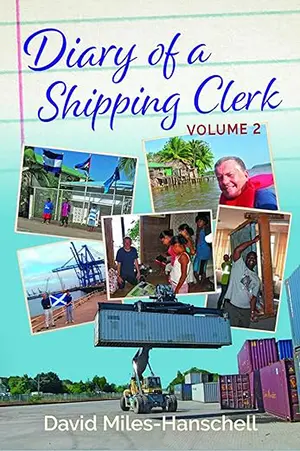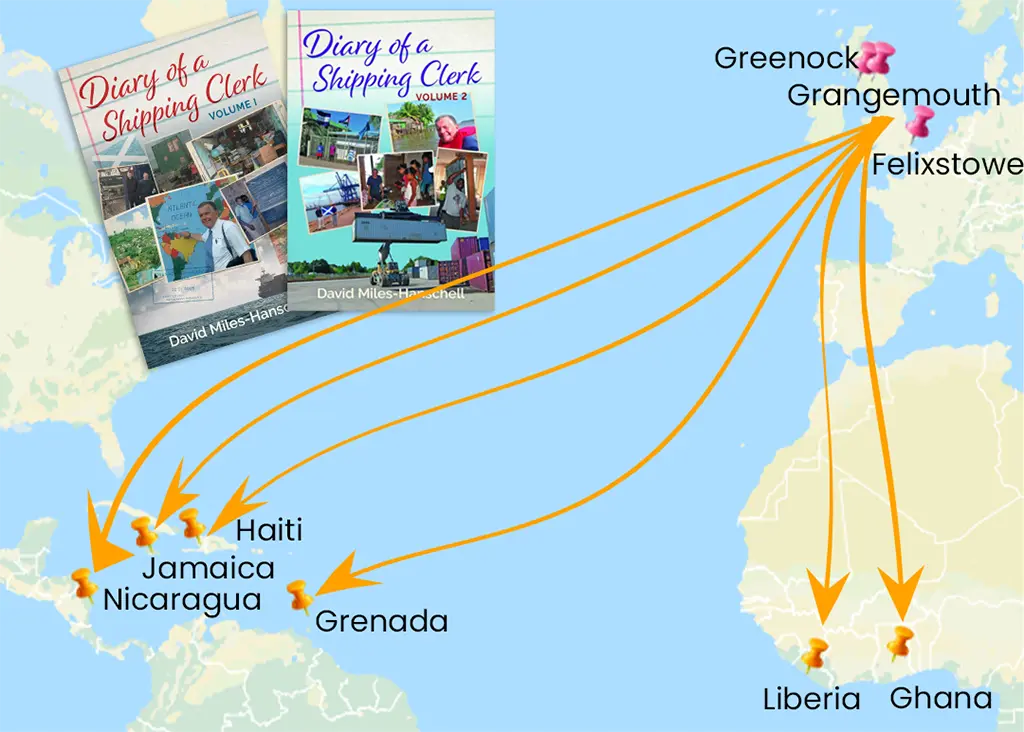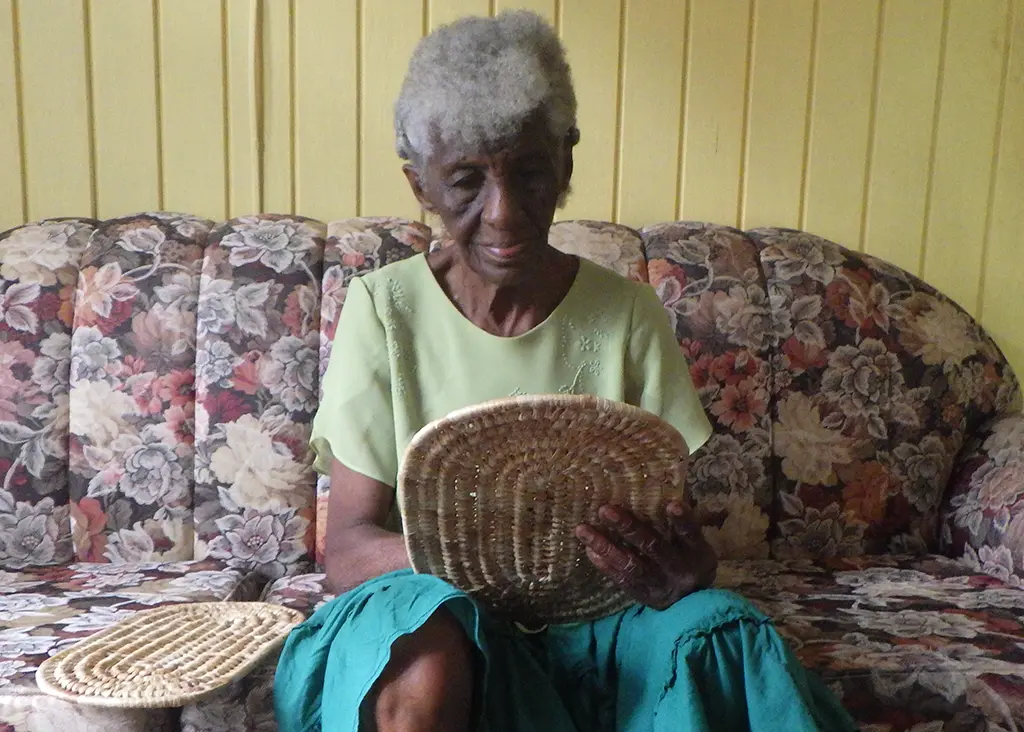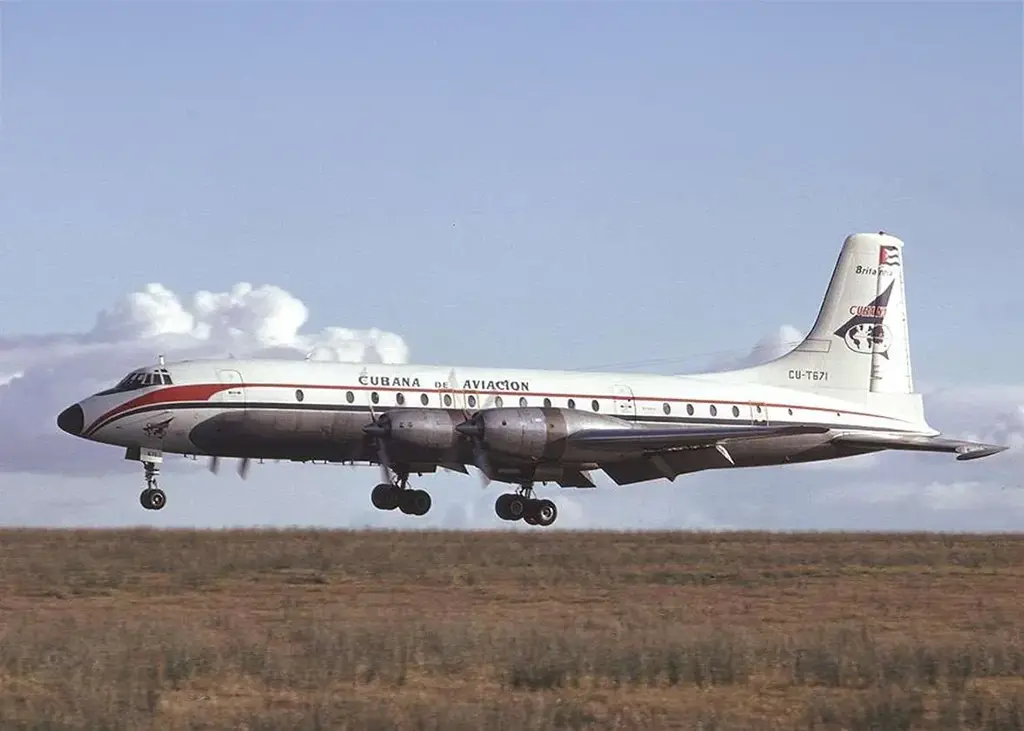
David Miles-Hanschell is a Bajan who settled in Scotland fifty years ago. He has lived on the Isle of Bute (an island in the Firth of Clyde on the East coast of Scotland) for the last thirty years where he was an inspirational primary school teacher. Having retired David set up and self funded a charity that has helped to change the lives of children in poor communities in the Caribbean and Africa.
The catalyst for this philanthropic journey was the aftermath of Hurricane Ivan in Grenada which struck Grenada on 7th September 2004, causing widespread devastation.
Instead of standing idly by, David decided to take action setting up a charity dedicated to collecting books from local schools that were closing down due to mergers, and shipping them in containers to struggling school communities overseas. David and his team of volunteers have transformed the lives of students and teachers in struggling schools, providing hope and opportunities for a brighter future.
During the covid years David’s humanitarian work was curtailed so he opted to documented his remarkable journey in “Diary of a Shipping Clerk” Volume 1 released in 2022 and Volume 2 which which has recently been released. Both books offer a first-hand account of the challenges, triumphs and heart warming moments that have defined David’s humanitarian work, driven by his determination to make a difference in an area he is passionate about: educating children in poor communities.
Book launch for: “Diary of a Shipping Clerk: Volume 2”
by David Miles-Hanschell
Wednesday the 21st February 2024 from 10am to 4pm
at
Green Tree Café in Rothesay, Isle of Bute, Scotland
Both books are self-published and available for purchase from Amazon:


David has three more volumes in the pipeline!
David Miles-Hanschell’s Bajan roots
On his father’s side, David’s family came to Barbados from Puerto Rico and Denmark, in the middle of the nineteenth century. In Barbados, they opened a ship chandlery business, Hanschell & Co, in the capital of Bridgetown.
On his mother’s side of the family his grandparents emigrated from the British Isles to Western Canada, some of whom settled in the town of Rothesay in New Brunswick.
My maternal grandfather C. L. Miles had been transferred from The Imperial Bank of Commerce in Prince Edward Island, Canada to manage the branch in Bridgetown and returned to Ottawa at the outbreak of World War II, leaving my Granny Ashie Howatson-Mundell to vacate the bank manager’s house Lyrias in genteel poverty to live in a rented flat in Hastings at Balmoral Flats. It was from here that my sister Diana and I experienced the thrill of the force of Hurricane Janet in 1955 in complete safety, hoping that we would never have to return to our respective schools.
I learned years later, that my paternal grandfather had died while on holiday in England; leaving his widow, Amy Manning, my Dad, Aunt Jean and Uncle Valdemar to fend for themselves. They had to give up their home Rudkip and went to live with my great aunts (her sisters):- Mrs. Louis Gittens and the Miss Phyllis Manning, at Pavilion Court.
When David was seven, in 1950, his family moved from Barbados to Trinidad where he completed his primary education. He returned to Barbados in1955 as a boarder at The Lodge School. After he finished at Lodge, David lived in Canada and had a series of jobs all over the world before settling in Scotland.
In May 1973 I arrived at Prestwick en route for Prestatyn in Wales to visit my sister Diana, her husband Jim, and their family. My sister had come over to London from Trinidad in the early sixties to study floristry, and had met and married an Englishman in the British Army.
I should say that almost immediately I felt a certain affinity with Scotland, which is not surprising given that my maternal grand mother had emigrated to Calgary, Canada, from the Inverlael estate outside Ullapool with her widowed mother, brothers and sisters. I did not know that then, but learnt it some years later. My father, however, had come over from Barbados to attend Edinburgh University in the 1930s and had graduated with an honours degree in agricultural botany.
I worked at casual employment for a year in Wales and France. I decided to extend my stay in the United Kingdom and enrol in the Post Graduate Certificate in Education course at Moray House College of Education in Edinburgh. On completion of the course I began my Scottish teaching career in the East End of Glasgow, eventually marrying and coming to teach on the Island of Bute some thirty years ago.
Prior to hurricane Ivan’s devastation of Grenada in September 2004, I had had no direct contact with Grenada. However, some of my first chums in Saint Augustine, Trinidad, where we had gone to live on leaving Barbados in 1950, had grandparents who owned a coconut plantation in Grenada. These young friends would often make me envious with tales of the holidays they had spent galloping their horses along the beaches, and shooting wild pigeons in the surrounding rain-forest. For my young imagination, it was an island of immense variety and appeal after the sterility and colonial sugar cane monoculture of Barbados. Later, I would board with a Mr. and Mrs. Alleyne at Newcastle Plantation when I returned to Barbados for my secondary schooling. Mrs Alleyne came from Grenada and some of my fellow boarders also came from there.
Grenada lies at the southern end of the chain of islands known as the north-south arc of the Lesser Antilles, lying in the eastern Caribbean Sea about 100 miles (160 km) north of the coast of Venezuela. It is a volcanic island of 90,000 people that is a major producer of nutmeg, cloves and other spices. Its known as the “Spice Island”.
Grenada has had a turbulent and unsettled history: colonised for nearly two centuries by the French, and fought over several times by the British until eventually the French Estate owners were replaced by British ones, who continued to grow sugar, coffee and cocoa with slave labour from Africa. It is a beautiful island with a tropical climate and rich vegetation, and attracts holidaymakers throughout the year. The tourist industry now plays a vital part in the islands economy. The island achieved nation status in 1974.
Hurricane Ivan struck Grenada on Tuesday 7th September 2004 (a category 4 hurricane on the Saffir-Simpson scale). For nearly 12 hours the island was subjected to storm force winds in excess of 220 km/hr. When it was over the following morning the “Spice Island” was devastated.
I was first informed of the extent of that devastation in a brief report contained in a letter handed to me by a parent of a pupil in my P4/5 class at the Port School and I decided that my class, as part of their enterprise education curriculum, could do something to help a school on that hurricane devastated island.
Also at the time, the pupils as part of the environmental studies curriculum were learning about the effects of extreme weather in different parts of the world.
I was able to share with them my memories of Hurricane Janet that swept over Barbados and Grenada in 1955 when I was sent from the Alleyene’s boarding establishment to stay with my Scottish Granny for safety at her small rented flat in Hasting at Balmoral Flats.
For me, the experience was of great excitement, watching coconut trees and galvanised roofs flying through the air, though I was unaware of the danger and real damage being done not only to buildings, but also to people’s lives.
The letter detailing the devastation of Hurricane Ivan was to change my life. It began the start of an epic journey of self-discovery, where my desire to help the people of Grenada was to consume my waking life.
I embarked on a self-financed project to salvage a small fraction of the vast quantities of fit for purpose, surplus to requirements school equipment that was heading to land fill.
I began to recall overhearing conversations about the different shipping lines that the adults were travelling on cross Atlantic; Lambert & Holt; Furness Withy and for some reason J&J Denholm Ltd stuck in my mind.
I wanted to gift, if I could a 20ft ocean freight container of good quality education resources to Grand Roy Government School, Grand Roy, St. John, Grenada that had been severely damaged by Hurricane Ivan on 7th September 2004.
I wondered if Denholm still shipped to the West indies and discovered that they had an office in Glasgow and that they did indeed deliver some cargo to the Caribbean in this instance, mainly salted Whitefish from Whitby. J&J Denholm over a number of years gave my project pro bono support with logistics, and as they say the rest is part of my history…
Adapted from the Introduction from “The Diary of a Shipping Clerk Volume 1” and from email correspondence between Peter Burton and David Miles-Hanschell.Advertisements
For more information about David Miles-Hanschell’s charity work visit www.haitirelief.org.uk
Bruce Callow a friend of David Miles-Hanschell’s who is based in Calgary, Alberta (see Volume Two, Diary of A Shipping Clerk) wrote and recorded this song as a tribute to David’s humanitarian work.
And some background on the song:
Additional information:
New book by man who led Inverclyde international aid effort by Lorraine Tinney, Senior Reporter, Greenock Telegraph on 18th January 2024.
[Editors note: This post was written by Peter Burton. The authorship has been assigned to David Miles-Hanschell so it appears under David Miles-Hanschell’s list of authored posts.]






Leave a Reply